How to deal with a cabbage scoop?
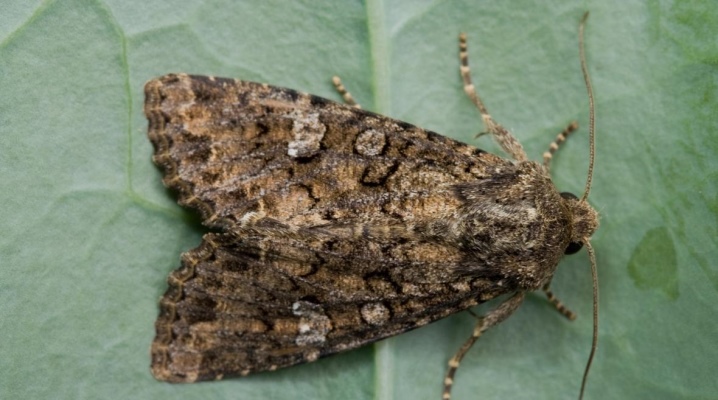
The cabbage scoop is a nocturnal insect whose caterpillars infect many crops, including potatoes, cabbage, tomatoes and more. She can appear on absolutely any garden bed, you cannot insure against this. What this pest looks like and what methods of dealing with it are better to use, read below.
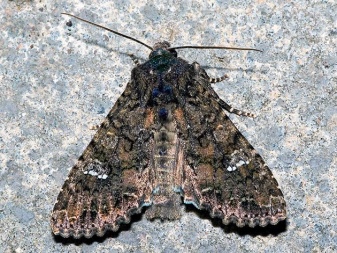
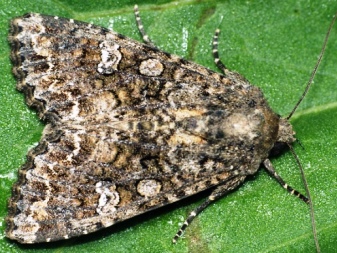
Description of the cabbage scoop
The scoop is a family of butterflies that are garden pests. This is a nocturnal insect, which in general, as an adult, does not do any harm to plantings, but its larvae during their development can completely destroy plants. There are a lot of varieties of this butterfly: garden, cabbage, winter, exclamation and others. The insect is polyphagous, cruciferous crops mainly suffer from it.
Outwardly, the butterfly looks like a moth. You can distinguish it by its wings. The front ones have a dark brown color with brown spots and lines, while the back ones are painted gray, and have a darker shade around the edges. The size of its wings can reach 5 centimeters. The dimensions of the butterfly itself may be different, it depends on many factors.


This pest is activated only at the end of spring or by the beginning of June, after which it literally immediately begins to multiply and lay eggs. In total, up to 3 generations of this butterfly may appear over the entire season - it depends only on the region and the climate in it.
Further, after 10-12 days, gluttonous caterpillars appear from the eggs, having a gray or dark green color. They need to eat on an ongoing basis, and therefore they actively eat cabbage and other cruciferous crops, depriving them of their presentation and forcing them to collapse, which subsequently leads to the death of plants. These harmful insects are active mainly at night, and during the day they prefer to rest.

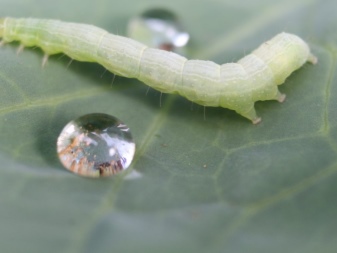
Signs and causes of appearance
Let's start with the signs of a parasite:
- on young seedlings, caterpillars actively gnaw the trunks of the seedlings, after which the plants fall, which is one of the signs of the activation of the larvae;
- during the setting of cabbage heads on the foliage, you can see holes and the remaining thick veins - the places where the most juicy pulp was eaten.
Further, if you do not take certain measures, the cabbage scoop can completely destroy the crop, depriving the plant of most of its foliage and causing rotting from the inside.
If we talk about the reason for the appearance of this harmful insect, then it is obvious - the presence of food. Particularly attractive to this parasite is the smell of cereals, hay or compound feed. Because of this, swarms of insects can often be seen near grain warehouses and outbuildings.
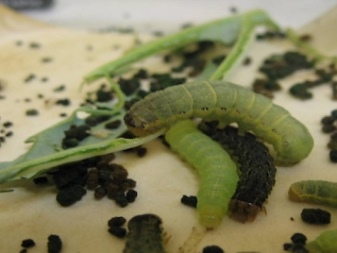
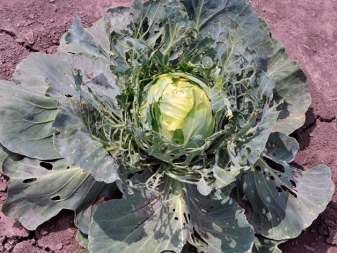
In addition, the cabbage scoop may appear due to the abundance of weeds, since the butterfly very often lays eggs on them.
Control measures
Chemicals
Chemicals are highly effective, but many summer residents do not like to use them. The reason for this attitude is the high toxicity of such agents. They give a quick and long-term result, but they harm not only parasitic insects, but also destroy beneficial ones, for example, pollinating bees.
In addition, insects can develop addiction to a particular drug, and therefore, making several sprays, it is necessary to use different means.They use this kind of drugs most often in advanced cases, when no other means are helping.
If we talk about the drugs themselves, then most often among them are such funds as:
- Iskra-M;
- "Sherpa";
- "Dust";
- "Pyrethrum";
- Inta-Vir.
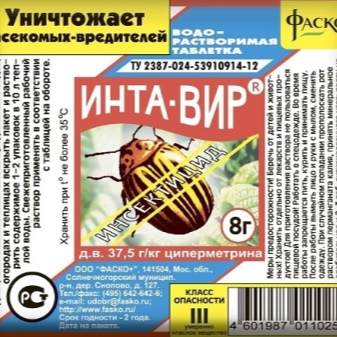
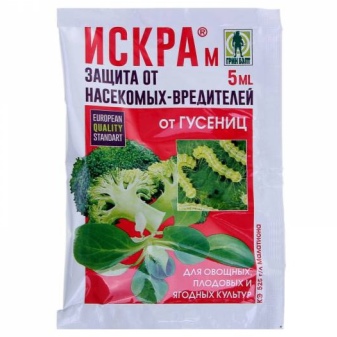
They have shown themselves well in action in the garden and are able to completely rid you of harmful caterpillars.
Note that before processing the plant, you must read the instructions for preparing a solution based on the chemical and its dosage, as well as how to use it further, otherwise there is a risk of harm to the plantings. Besides, it is necessary to process the crop at least a month before harvesting, otherwise chemicals will remain in it, which may not in the best way affect the human body and cause poisoning.
To get rid of parasites in this way, you should purchase protective equipment, including at least rubber gloves and a mask, and also strictly follow all safety rules.

In addition, it is worth considering the weather conditions for the chemical treatment. In cloudy weather, it will be pointless to spray the plants, since after the rain you will have to carry out the treatment again.
Biological agents
The biological method of control is no less effective than the use of chemicals. This method involves the use of natural enemies of this harmful insect, various antibiotics, as well as fungal and bacterial insecticides. They are completely harmless, but their use may seem a little tricky than using chemicals.
If we talk about insecticides, then they are used in small quantities and for the most part are combined with chemical agents, which increases their effectiveness and efficiency several times.
Among all biological products at the moment, the most demanded are:
- "Bitoxibacillin";
- "Lepidocide";
- Fitoverm.
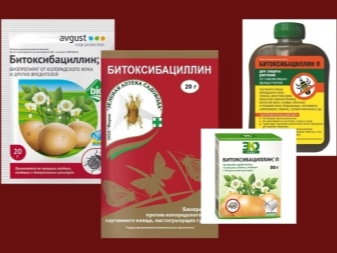
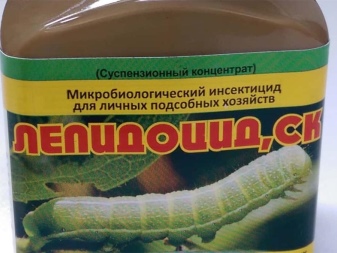
Before using them, you must read the instructions.
If we talk about the natural enemies of harmful insects, then they most often mean predatory mites, which are ready to feast on caterpillars with pleasure. In addition, insects such as trichograms can be used. They are able to destroy the eggs of harmful butterflies, laying their own in them.
You can buy such assistants in special stores. These beneficial insects are used mainly in small garden plots, since their cost is high.
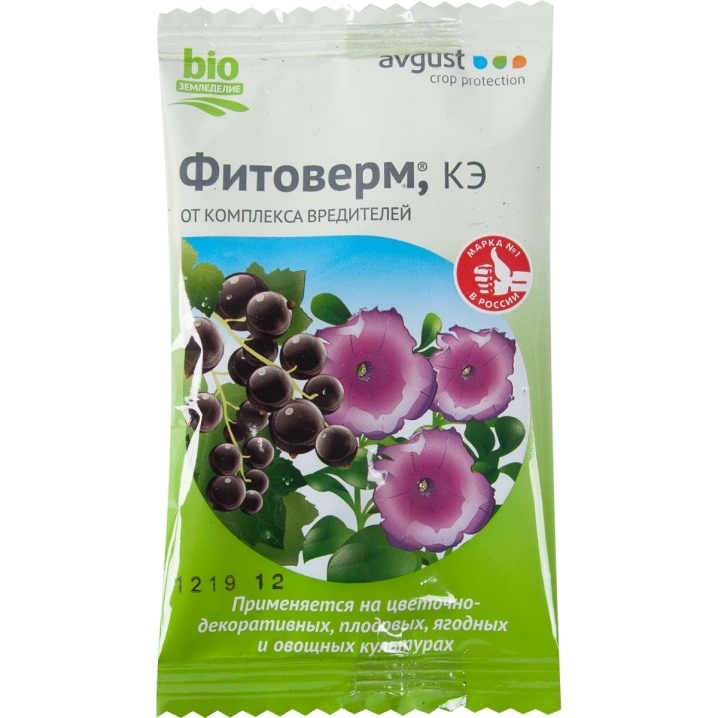
Folk remedies
Folk remedies are in demand among summer residents. They are easy to use, and you can make them yourself, at home and at no special cost. The big advantage of solutions made according to folk recipes is that they are available and completely harmless. Some of them are for watering the plants and some for spraying. However, we note that such mixtures are not aimed at exterminating harmful insects, but at scaring them away with the help of fairly specific and caustic aromas.
For example, to combat harmful insects, a solution based on red pepper is suitable. You will need 0.1 kilogram of the main component fresh or 20 grams dry, as well as a liter of water. All this needs to be boiled for about an hour, after which it is necessary to strain the resulting mixture and leave for 2 days for tincture.
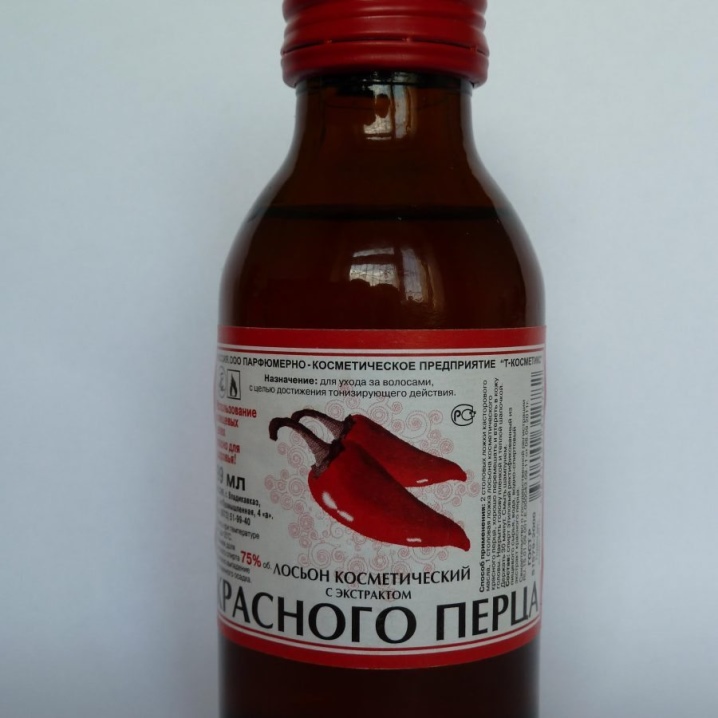
After this time, the broth must be diluted with 10 liters of water, mixed and sprayed with the plants.
An effective remedy is bitter wormwood. You will need 0.25 kilograms of this component and a bucket of hot water. After the liquid has been infused for 6 hours, the solution can be used on plants.
There is another recipe from wormwood. For it, you need a kilogram of the component. It must be boiled in 3 liters of liquid for about 15 minutes, then strain. Separately, you need to insist bird droppings for about 2 days with the calculation of 100 grams of a component per 3 liters of liquid, after which both mixtures should be mixed, diluted with 10 liters of water. Further, the solution can be used on plants, spraying them 2 times at intervals of a week.
A good component for solutions is burdock. This plant must be well tamped in a container so that it takes up exactly half of it. The rest must be filled with water, after which the solution should be left to infuse for 3 days.
Besides, no less effective for combating a harmful butterfly will be solutions made on the basis of milkweed, dope, tobacco or tomato tops. Note that in order for the solution to fix well on the cabbage foliage, you can drop liquid soap into it or add 40 grams of household soap.


Agrotechnical method
This method is not aimed at fighting the pest, it is more of a preventive nature and helps to avoid the appearance of a harmful butterfly.
The agrotechnical method includes the control of weeds, which must be removed on an ongoing basis. This also includes the cultivation of row spacings, which implies regular loosening of the land, as well as deep autumn plowing, which helps to improve the condition of the root system and increase the planting resistance to insect attacks.

How to deal with a cabbage scoop, see the video below.













The comment was sent successfully.